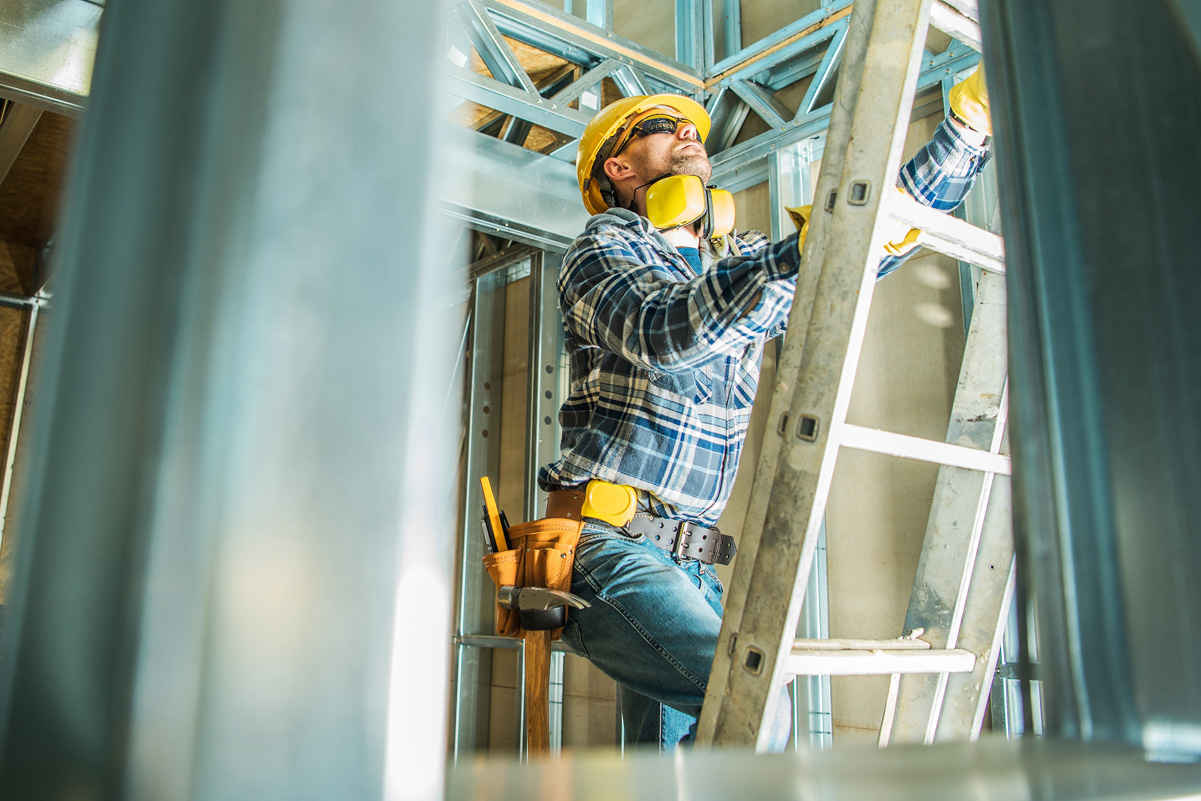For sheet metal contractors in Florida, safety on the jobsite isn’t just a guideline, it’s a necessity. From installing ductwork in tight spaces to working at roof edges, sheet metal professionals face daily hazards that demand careful planning and proper protection. According to OSHA, falls remain the leading cause of construction-related injuries and fatalities, making fall protection and ladder safety essential for every contractor.
At BrightFund, we’ve supported Florida’s licensed contractors since 1955 with workers compensation coverage and proactive safety programs designed to reduce risks. Below, we break down best practices for sheet metal safety, covering fall protection, ladder use, and roof-edge safeguards to help protect your crew, your business, and your bottom line.
Why Fall Protection Matters for Sheet Metal Contractors
Sheet metal contractors often work on elevated platforms, rooftops, and temporary structures where slips, trips, and falls can happen in an instant. OSHA reports that falls account for nearly one in three construction fatalities each year.
For Florida contractors, the added heat and humidity can also contribute to fatigue and reduced focus, making fall protection measures even more critical. By investing in proper equipment and training, you not only safeguard your employees but also lower the risk of costly claims and downtime.
Essential Fall Protection Measures
1 – Harnesses & Lifelines
- Workers performing tasks at six feet or higher should always wear a full-body harness.
- Lifelines must be properly anchored to a secure point that can withstand at least 5,000 pounds of force.
- Regularly inspect harnesses for wear, fraying, or damaged buckles before each use.
2 – Guardrails & Safety Nets
- Guardrails should be installed along roof edges, open-sided platforms, and scaffolding.
- Safety nets may be required in larger projects where guardrails are not feasible.
3 – Training & Certification
- OSHA requires employers to provide fall protection training for all employees working at heights.
- Refresher training should be scheduled annually, especially for crews frequently working on new job sites.

Ladder Safety Best Practices for Contractors
Improper ladder use is another leading cause of jobsite injuries for sheet metal workers. Whether accessing a rooftop unit or installing ductwork in an overhead space, following ladder safety protocols can significantly reduce risks.
- Choose the Right Ladder: Always use ladders designed for construction-grade work, with the correct load rating for the task.
- Secure Placement: Ladders should be placed on stable, level ground, with the base secured to prevent slipping.
- Maintain Three Points of Contact: Workers should keep at least two hands and one foot (or two feet and one hand) on the ladder at all times.
- Do Not Overreach: Moving the ladder is safer than leaning to the side, which can cause tipping.
- Inspect Before Use: Check for cracks, bent rungs, or worn-out rubber feet that may compromise stability.
Roof Edge Protection in Sheet Metal Work
Installing sheet metal often requires working near roof edges where hazards increase significantly. Florida’s building codes and OSHA standards both emphasize the need for roof-edge protection to prevent falls.
Best practices include:
- Installing temporary guardrails before work begins.
- Using warning lines and safety monitors when full barriers are not possible.
- Ensuring all workers are tied-off when operating within six feet of a roof edge.
Building a Culture of Safety
Fall protection and ladder safety aren’t just about compliance, they’re about creating a culture where every worker feels empowered to prioritize safety. As a member-owned fund, BrightFund has seen firsthand how proactive safety programs not only protect workers but also help contractors lower costs through reduced claims and the opportunity for return dividends.
By providing ongoing training, investing in proper equipment, and holding regular jobsite safety meetings, sheet metal contractors can dramatically improve outcomes for both employees and the business.
Partnering with BrightFund for Safer Jobsites
Since 1955, BrightFund has partnered with Florida’s trade contractors, roofers, HVAC technicians, electricians, plumbers, masonry, and sheet metal professionals, to deliver tailored workers compensation coverage backed by safety-first solutions.
Our proactive claims support, certificates of insurance, and member dividend opportunities help contractors not only meet compliance but also gain a competitive advantage in their industry.
If you’re a licensed sheet metal contractor in Florida, discover how BrightFund can help keep your crew safe while lowering your long-term workers compensation costs.
